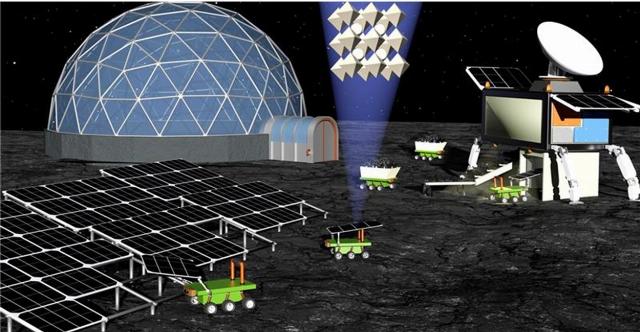Moon dust, which has been considered a problem for lunar expeditions for decades, may solve a key issue of space exploration. Scientists have found a way to turn it into an important element for energy production. Theoretically, this technology can reduce the cost of launching materials into space and bring the creation of permanent lunar bases closer.
Solar panels are the main source of energy for space missions. Modern models are efficient, but their production and transportation are expensive. For example, solar panels with an efficiency of 30-40% are covered with a special protective glass or thick film to protect against radiation. This increases the weight of the cargo: each additional kilogram sent into space costs thousands of dollars . Tons of equipment will be required for lunar bases, and the delivery of even a minimal set will result in a large sum.
Scientists have been looking for decades for ways to use the resources of other planets. Lunar regolith, a loose surface layer of dust and rocks, was considered as a material for construction, extraction of water and oxygen. Now researchers have found out that it can be turned into a base for solar panels, which will allow them to be created right on the spot. According to experts, this can reduce the payload mass by almost 99% and reduce transportation costs by the same amount.
A team of German engineers led by Felix Lang from the University of Potsdam has proposed a new way to create solar panels. They used a material that mimics moon dust, which they were able to turn into glass that can replace the traditional protective coating of solar panels. The new method has made it possible to create lighter and more radiation-resistant panels. As the active material, the scientists used perovskites, crystals that convert sunlight into electricity very efficiently.
Researchers have melted a substance that mimics moon dust into glass. Then they created solar cells by combining the "moon glass" with perovskite. These crystals are easier to manufacture, cheaper, and lighter than silicon, which is commonly used to make solar panels.
During the experiment, it turned out that solar panels based on "moon glass" have an efficiency 100 times higher than the efficiency of standard ones for each gram of material sent into space. That is, if you take one gram of such a battery and one gram of a regular one, the "lunar" battery will give 100 times more energy. It turns out that per kilowatt of battery power, you will need to bring 100 times less material from Earth.
Tests have shown that the "moon glass" resists radiation better. Ordinary glass darkens under cosmic radiation, blocking light. But the natural brown hue of moon dust due to the impurities of iron and titanium in its composition stabilizes the material. After irradiation, the "lunar" panels remained operational, while their terrestrial counterparts began to degrade.

Moon dust simulator, "moon glass" and the resulting solar cells. Micrography of the cross section and crystal structure of perovskite are also presented.
Image source: Sercan Özen
The production process of "moon glass" turned out to be quite simple. It can be melted using concentrated sunlight. By adjusting the thickness of the glass and the composition of the solar panel, the scientists achieved an efficiency of 10%. However, they are confident that cleaning the lunar dust from impurities will increase the figure to 23%.
Despite the promise of the technology, there are still a number of unresolved issues. There are no perovskites on the Moon, apparently, they plan to create them already on the surface of the satellite. To obtain them, solvents are needed that evaporate in a vacuum.
The moon's gravity, which is six times weaker than Earth's, can affect the glass formation process. The same applies to temperature fluctuations.
Temperature differences from minus 173 to plus 127 degrees Celsius can damage the structure of the panels. To test the technology in real conditions, German engineers plan to send an experimental installation to the moon.
The scientific work was published in the journal Device.

